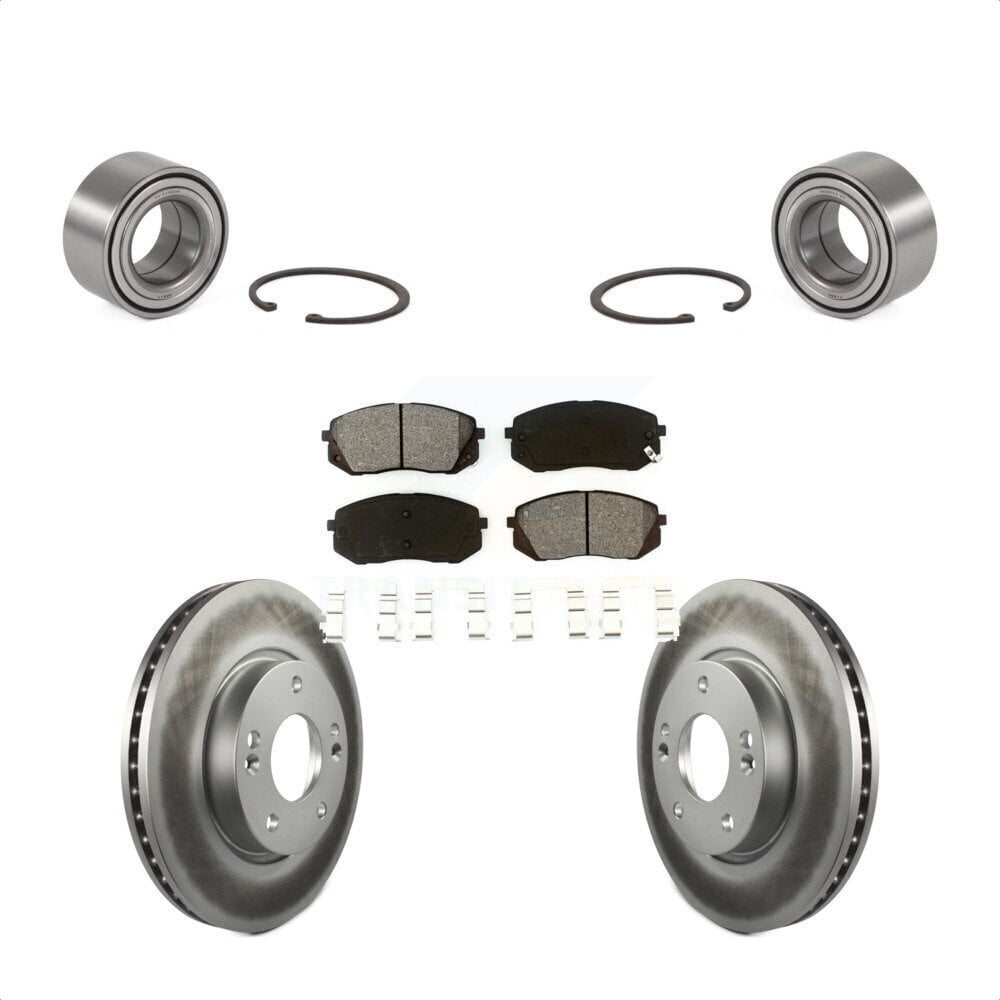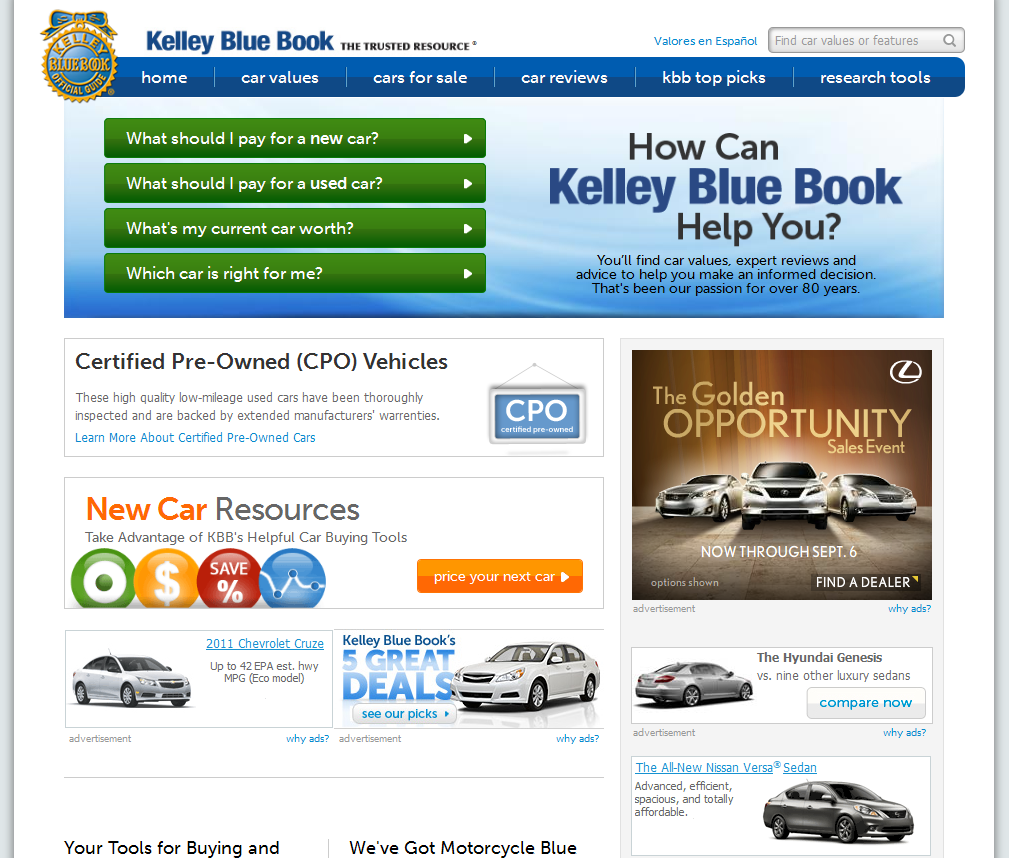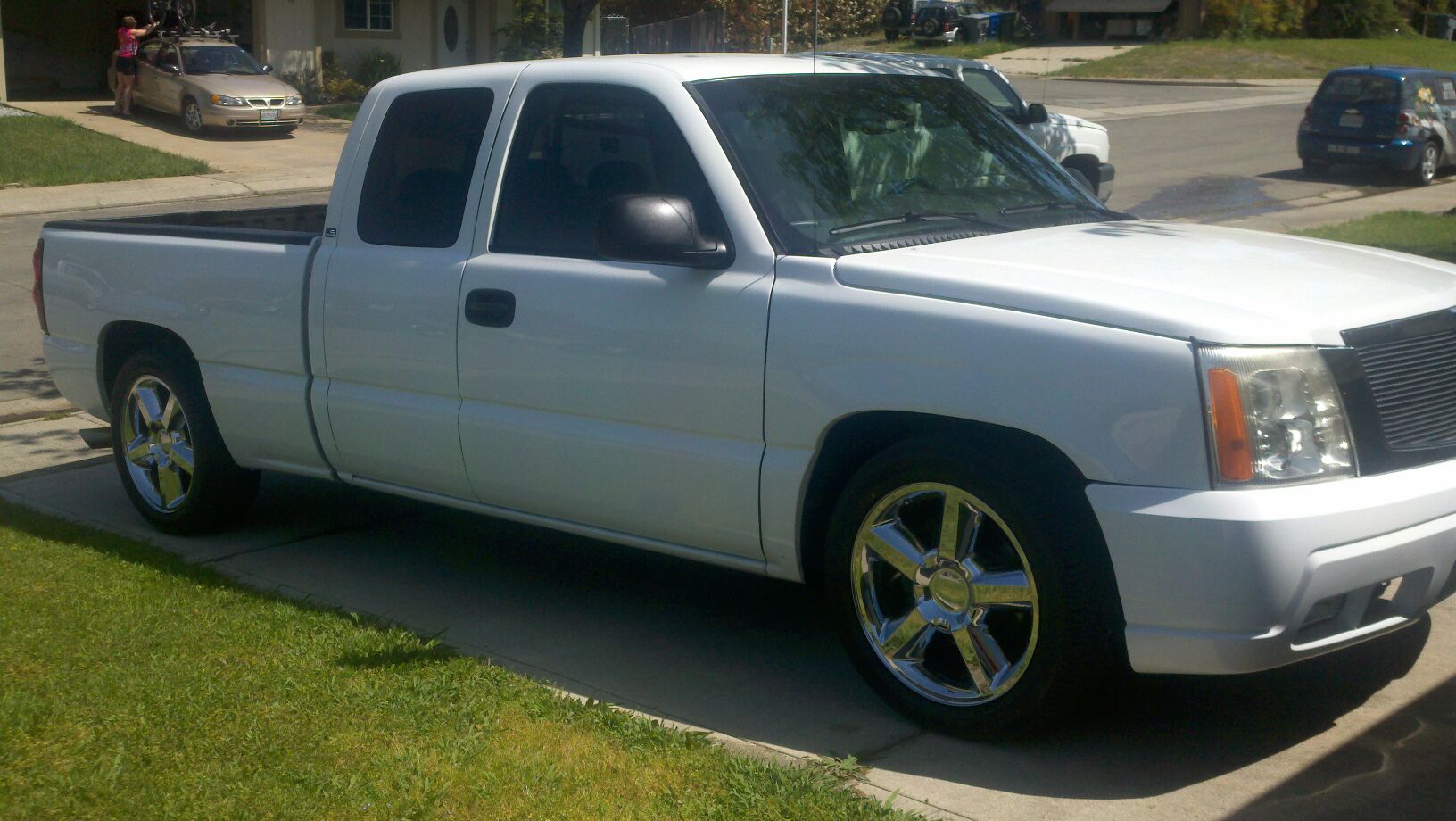KBB for Semi Trucks: Navigating the World of Commercial Vehicle Valuation pickup.truckstrend.com
When the time comes to buy, sell, or simply assess the value of a vehicle, many immediately think of Kelley Blue Book (KBB). For decades, KBB has been the gold standard for consumer vehicle valuations, providing a trusted benchmark for cars, trucks, and SUVs. However, for those operating in the heavy-duty commercial trucking industry, a crucial question often arises: Is there a KBB for semi trucks?
The short answer is no, not in the traditional sense that KBB serves passenger vehicles. Kelley Blue Book does not provide valuation services for semi-trucks or other heavy commercial vehicles. The world of commercial trucking is vastly more complex, with unique factors influencing value that differ significantly from the consumer automotive market.
KBB for Semi Trucks: Navigating the World of Commercial Vehicle Valuation
This article aims to be your comprehensive guide to understanding semi-truck valuation, serving as the "KBB equivalent" by pointing you toward the right resources and methodologies. We’ll explore why traditional KBB doesn’t apply, introduce the actual industry standards, detail the myriad factors that influence a semi-truck’s worth, and provide practical advice for getting an accurate valuation.
Why Traditional KBB Doesn’t Apply to Semi Trucks
The reasons KBB doesn’t cover semi-trucks are rooted in the fundamental differences between consumer and commercial vehicles:
- Complexity and Customization: Semi-trucks are highly specialized machines. They come in an enormous array of configurations (day cabs, sleepers of various sizes, different axle counts, engine sizes, transmission types, and vocational add-ons like wet kits or PTOs) tailored for specific freight types or hauling needs. This level of customization makes a standardized, broad valuation guide impractical.
- Usage and Depreciation: Unlike passenger cars, semi-trucks are built for high mileage and heavy-duty work. They often accumulate hundreds of thousands, even millions, of miles in just a few years. Their depreciation curve is steep and heavily influenced by usage, maintenance history, and the specific components installed.
- Market Dynamics: The commercial trucking market is driven by economic cycles, freight rates, fuel prices, and regulatory changes (e.g., emissions standards). These macro factors can significantly impact demand and, consequently, the value of used trucks.
- Specialized Components: The value of a semi-truck is heavily tied to its powertrain (engine and transmission), which are often separate high-value components. Their specific make, model, service history, and remaining warranty can dramatically sway the truck’s overall worth.

The True "KBB Equivalents" for Semi Trucks: Key Valuation Resources
While there isn’t a single KBB for semi-trucks, the industry relies on several reputable sources and methodologies to determine commercial vehicle values. These are the true "KBBs" of the trucking world:

- Truck Blue Book (TBV): Often considered the closest equivalent to KBB for heavy-duty trucks. Published by Price Digests, TBV provides comprehensive valuation data for a wide range of commercial vehicles, including heavy-duty trucks, medium-duty trucks, and trailers. It offers retail, wholesale, and finance values based on extensive market research, auction results, and industry trends. Access is typically subscription-based.
- Black Book (Commercial Truck Guide): Another leading authority in commercial vehicle valuation, Black Book specializes in providing wholesale values based on real-time auction data. Their Commercial Truck Guide is a go-to resource for dealers, lenders, and auctioneers to understand the current market value of used trucks at the wholesale level. Like TBV, access is usually via subscription.
- EquipmentWatch (formerly Iron Solutions): While broader in scope (covering construction and agricultural equipment), EquipmentWatch also provides valuation data for vocational trucks and some heavy-duty trucks. They offer market values, depreciation curves, and cost-of-ownership data.
- Auction Results and Online Marketplaces: Perhaps the most practical "real-time KBB" for many owner-operators and smaller businesses is direct market observation.

- Online Marketplaces: Websites like TruckPaper.com, CommercialTruckTrader.com, and MyLittleSalesman.com list thousands of trucks for sale. By searching for comparable makes, models, years, and specifications, you can gauge current asking prices.
- Auction Houses: Reputable heavy equipment auctioneers like Ritchie Bros. Auctioneers and IronPlanet publish past auction results. These provide excellent insights into true wholesale values, as they reflect what buyers are willing to pay at a given moment.
- Professional Appraisers: For highly specialized, unique, or high-value trucks, or in legal/insurance contexts, a certified commercial truck appraiser is invaluable. They conduct thorough inspections, analyze market data, and provide an unbiased, expert valuation.
Factors Influencing Semi-Truck Value
Understanding the true worth of a semi-truck requires a meticulous assessment of numerous variables. Here are the most critical factors:
- Make and Model: Reputable manufacturers (e.g., Freightliner, Peterbilt, Kenworth, Volvo, Mack, International) generally hold their value better. Specific models within these brands also have varying demand.
- Year of Manufacture: Newer trucks generally command higher prices, but depreciation can be rapid in the first few years.
- Mileage: This is paramount. For semi-trucks, mileage is a direct indicator of wear and tear on major components. Trucks with lower mileage for their age will fetch a premium.
- Engine and Transmission: The specific make, model, horsepower, and torque of the engine (e.g., Cummins X15, Detroit DD15, Volvo D13) and transmission (e.g., Eaton Fuller 10-speed, I-Shift, Ultrashift) significantly impact value. Their service history and any remaining warranty are crucial.
- Condition (Exterior, Interior, Mechanical):
- Exterior: Rust, dents, paint condition, tire wear.
- Interior: Cleanliness, wear on seats, dashboard functionality, working electronics.
- Mechanical: Performance of engine, transmission, brakes, suspension, HVAC, lights, and all critical systems. Any known issues or recent repairs.
- Specifications & Configuration:
- Sleeper Size: Day cab vs. various sleeper sizes (e.g., 48-inch, 72-inch, 80-inch).
- Axle Configuration: Tandem axle, tri-axle, lift axle, etc.
- GVWR/GCWR: Gross Vehicle Weight Rating and Gross Combined Weight Rating.
- Specialized Equipment: Wet kits (for hydraulics), power take-off (PTO), auxiliary power units (APUs), specific fifth wheel types, custom chassis modifications.
- Maintenance Records: A complete and verifiable service history demonstrating regular maintenance and timely repairs adds significant value and instills buyer confidence.
- Market Demand and Economic Conditions: Freight rates, fuel prices, interest rates, and the overall health of the economy directly impact the demand for trucks and, consequently, their value. A strong economy with high freight volumes usually means higher truck values.
- Geographic Location: Values can vary regionally due to local demand, climate (e.g., rust in northern states), and specific industry needs.
How to Get an Accurate Semi-Truck Valuation: A Step-by-Step Guide
Getting a precise valuation for a semi-truck requires diligence and leveraging multiple resources. Follow these steps:
-
Gather Comprehensive Information:
- VIN (Vehicle Identification Number): Essential for accurate identification.
- Full Specifications: Make, model, year, engine (make, model, HP), transmission (make, model, speeds), axle configuration, wheelbase, sleeper size (if applicable).
- Mileage: Current odometer reading.
- Condition Report: Document all aspects of the truck’s condition – exterior, interior, tires (tread depth), brakes, and any mechanical issues. Take high-quality photos.
- Maintenance Records: Compile a complete history of services, repairs, and part replacements.
- Unique Features/Upgrades: Note any specialized equipment, APUs, custom paint jobs, or recent overhauls.
-
Consult Industry Valuation Guides (If Accessible):
- If you have a subscription, use Truck Blue Book or Black Book Commercial Truck Guide to get an initial range for your truck based on its core specifications. Remember these provide base values that you’ll adjust.
-
Research Comparable Sales and Listings:
- Visit TruckPaper.com, CommercialTruckTrader.com, MyLittleSalesman.com, and similar sites. Search for trucks identical or very similar to yours in make, model, year, engine, transmission, and mileage.
- Look at sold listings on auction sites like Ritchie Bros. to see what trucks actually sold for, rather than just asking prices.
- Pay attention to the condition of comparable trucks. A "clean" truck with 700,000 miles might be worth more than a "rough" one with 600,000 miles.
-
Factor in Adjustments:
- Mileage: Adjust up for lower mileage, down for higher.
- Condition: Adjust based on whether your truck is above or below average for its age/mileage.
- Specific Features: Add value for desirable features like APUs, wet kits, or new tires. Deduct for missing essential items or outdated tech.
- Maintenance: A verifiable, excellent maintenance history can add thousands to the value.
-
Consider Market Conditions:
- Are freight rates strong or weak? Is there an oversupply or shortage of used trucks? These broader market forces can significantly influence final sale prices.
-
Obtain a Professional Inspection/Appraisal:
- For major purchases, sales, or financing, a pre-purchase inspection by a qualified mechanic is crucial. For official valuations, especially for loans or insurance, consider a certified commercial truck appraiser. They offer the most accurate and defensible valuation.
Benefits of Accurate Semi-Truck Valuation
Knowing the true value of a semi-truck is critical for various stakeholders:
- For Buyers: Ensures you pay a fair price, avoid overpaying, and make an informed investment.
- For Sellers: Helps set a realistic asking price, attracts serious buyers, and facilitates a quicker sale. Prevents underselling a valuable asset.
- For Lenders and Insurers: Essential for assessing collateral for loans and accurately determining insurance coverage and payouts.
- For Fleet Managers: Aids in managing depreciation, planning for fleet upgrades, and making strategic decisions about buying, selling, or trading assets.
- For Owner-Operators: Critical for budgeting, understanding asset worth, and making sound business decisions.
Challenges in Semi-Truck Valuation
Despite the available resources, valuing semi-trucks presents unique challenges:
- Lack of Centralized, Public Data: Unlike KBB for cars, there isn’t one easily accessible, free, comprehensive database for semi-truck values that covers all scenarios.
- High Variability: The sheer number of configurations, engine options, and usage patterns makes direct comparisons difficult.
- Rapid Depreciation: The high mileage accumulation means values can drop quickly, making up-to-date data essential.
- Economic Sensitivity: The trucking industry is highly sensitive to economic fluctuations, meaning values can change rapidly based on freight demand and fuel costs.
Key Factors Influencing Semi-Truck Valuation (Illustrative Examples)
This table illustrates how different factors impact the value of a semi-truck. Please note that the "Hypothetical Value Impact" is illustrative and not based on actual KBB data, as KBB does not value semi-trucks. Actual values depend on a complex interplay of all these factors and current market conditions.
| Factor | Description | Impact on Value | Example Scenario | Hypothetical Value Impact (Illustrative) |
|---|---|---|---|---|
| Make/Model | Brand reputation, reliability, popularity (e.g., Peterbilt, Freightliner, Volvo). | High | A well-regarded model (e.g., Peterbilt 389) vs. a less popular one. | Peterbilt 389: +$10,000-20,000 |
| Year of Manufacture | Age of the truck. | High | Newer models generally higher, but depreciation rate changes with age. | 2020 vs. 2015 model: +$20,000-40,000 |
| Mileage | Total distance traveled. Most critical factor for wear. | Extremely High | Lower mileage for age is highly desirable. Every 100k miles impacts value significantly. | 400k miles vs. 700k miles: +$15,000-30,000 |
| Engine/Transmission | Specific make/model/HP of engine (e.g., Cummins X15) and transmission (e.g., Eaton Fuller 18-speed). | High | Desirable, reliable powertrains with good service history fetch more. | Cummins X15 w/ Eaton Fuller: +$5,000-15,000 |
| Condition | Overall physical and mechanical state (exterior, interior, tires, brakes, engine). | High | "Excellent" condition vs. "Fair" (major rust, worn interior, mechanical issues). | Excellent vs. Fair: +$10,000-25,000 |
| Maintenance Records | Verifiable history of regular servicing and repairs. | High | Complete, documented history vs. no records. | With records: +$3,000-8,000 |
| Specific Features | APU, wet kit, custom sleeper, specific axle configurations, chrome accessories. | Medium to High (depending on feature) | Truck with APU and wet kit vs. barebones. | APU & Wet Kit: +$4,000-10,000 |
| Market Demand | Current economic conditions, freight rates, fuel prices, and supply/demand balance. | High (can fluctuate rapidly) | High freight demand and low inventory vs. slow economy and oversupply. | Favorable Market: +$5,000-15,000 |
| Location | Regional demand, climate (e.g., rust belt vs. sun belt). | Medium (can be significant regionally) | Truck from rust-free southern state vs. rust-prone northern state. | Rust-free region: +$2,000-5,000 |
| Accident History | Reported accidents, especially those involving structural damage. | High (Negative) | Major accident with frame damage vs. clean history. | Major Accident: -$10,000-30,000 |
Frequently Asked Questions (FAQ) about Semi-Truck Valuation
Q1: Is there a KBB for semi-trucks?
A1: No, Kelley Blue Book (KBB) does not provide valuations for semi-trucks or other heavy commercial vehicles. The commercial trucking industry uses specialized resources for valuation.
Q2: What are the best resources for valuing a semi-truck?
A2: The primary industry resources are Truck Blue Book (TBV) and Black Book Commercial Truck Guide. Additionally, online marketplaces (TruckPaper.com, CommercialTruckTrader.com) and auction results (Ritchie Bros.) are excellent for real-time market data. For complex cases, a professional appraiser is recommended.
Q3: How much does mileage affect a semi-truck’s value?
A3: Mileage is one of the most critical factors. High mileage, especially above typical averages for a truck’s age, significantly depreciates its value due to increased wear on major components. Conversely, lower mileage for its age will command a premium.
Q4: Should I get a professional appraisal for my semi-truck?
A4: While not always necessary for routine transactions, a professional appraisal is highly recommended for unique, high-value trucks, for insurance purposes, legal disputes, estate planning, or when seeking financing where precise valuation is crucial.
Q5: What’s the difference between wholesale and retail value for a semi-truck?
A5:
- Wholesale Value: The price a dealer or professional buyer would pay, typically at auction. This is usually lower, reflecting the cost for the dealer to recondition and resell the truck for a profit.
- Retail Value: The price a private buyer would pay from a dealer or directly from an owner-operator. This includes dealer markups, reconditioning costs, and often a warranty.
Q6: How do I find out the value of my specific semi-truck?
A6:
- Gather all truck details (VIN, specs, mileage, condition, maintenance records).
- Research comparable trucks on major online marketplaces and review past auction results.
- If you have access, consult industry guides like Truck Blue Book.
- Adjust based on your truck’s specific condition, features, and current market demand.
- Consider a professional inspection or appraisal for accuracy.
Conclusion
While the familiar "KBB for semi trucks" doesn’t exist, the commercial trucking industry has developed its own sophisticated ecosystem for valuing these complex and hardworking machines. By understanding the critical factors that influence value – from mileage and maintenance to engine specs and market demand – and by leveraging industry-specific resources like Truck Blue Book, Black Book, and real-time marketplace data, buyers and sellers alike can navigate the valuation process with confidence.
Accurate semi-truck valuation is more than just a number; it’s a cornerstone of smart decision-making in the dynamic world of commercial transportation. By putting in the effort to thoroughly research and assess, you ensure fair transactions and optimize your assets in the long haul.



